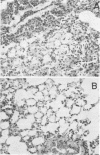Abstract
Either active immunization with trehalose-6, 6′-dimycolate (cord factor)-methylated bovine serum albumin complex or passive transfer of rabbit anti-cord factor serum induced in mice an enhanced resistance against infection with virulent human Mycobacterium tuberculosis. This suggests that the anti-cord factor antibody exerts an infection-protecting effect by neutralizing the toxic action of cord factor during the course of living virulent infection with tubercle bacilli. The protective effect of active immunization with cord factor-methylated bovine serum albumin complex and of anti-cord factor serum was found to be specific for the tuberculous infection among a number of experimental infections in mice with a variety of cytopathogenic microorganisms tested.
Full text
PDF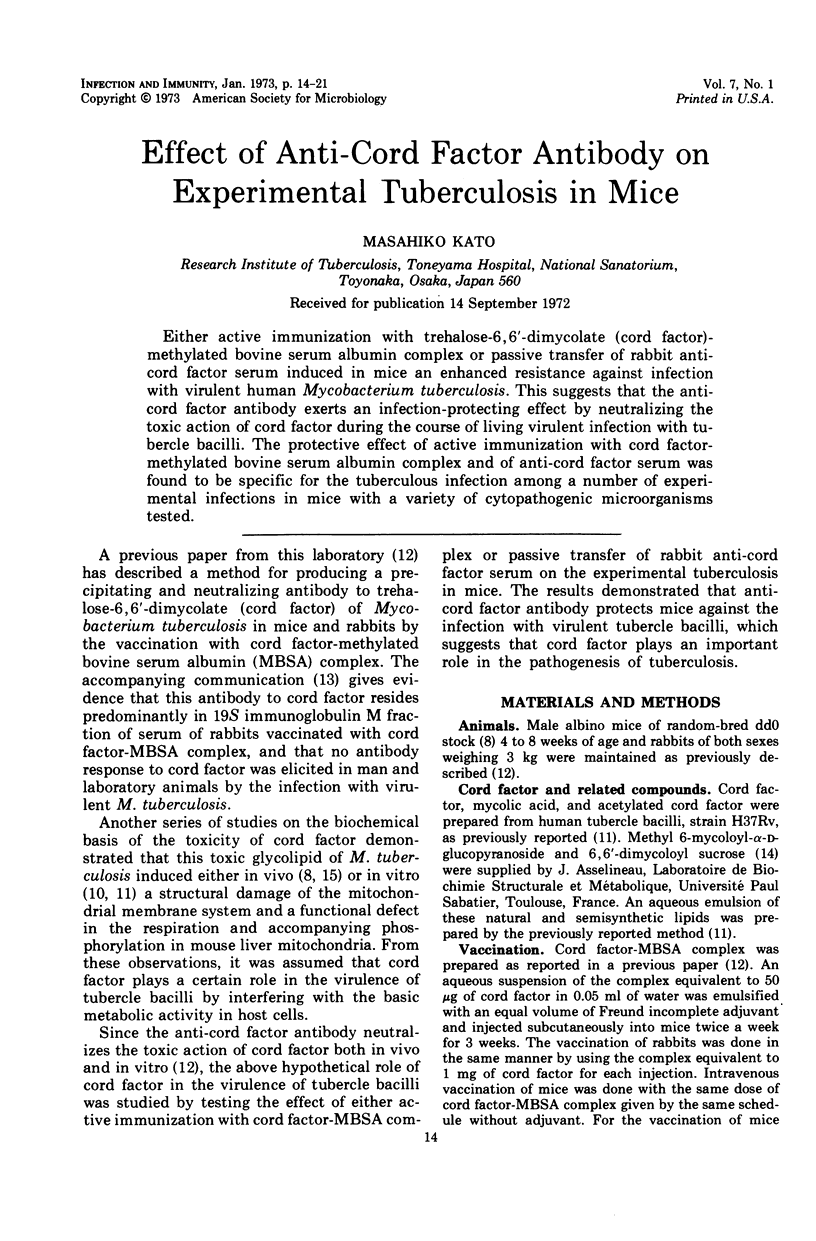
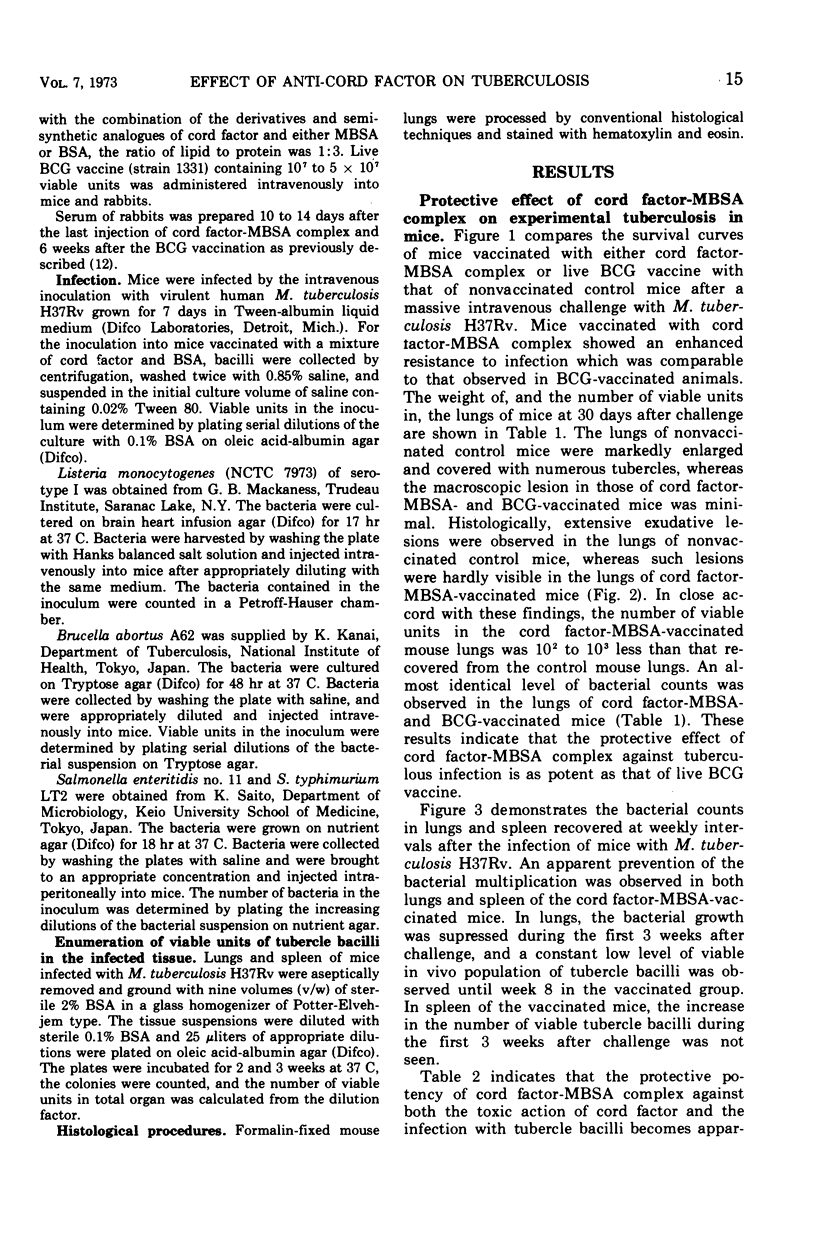
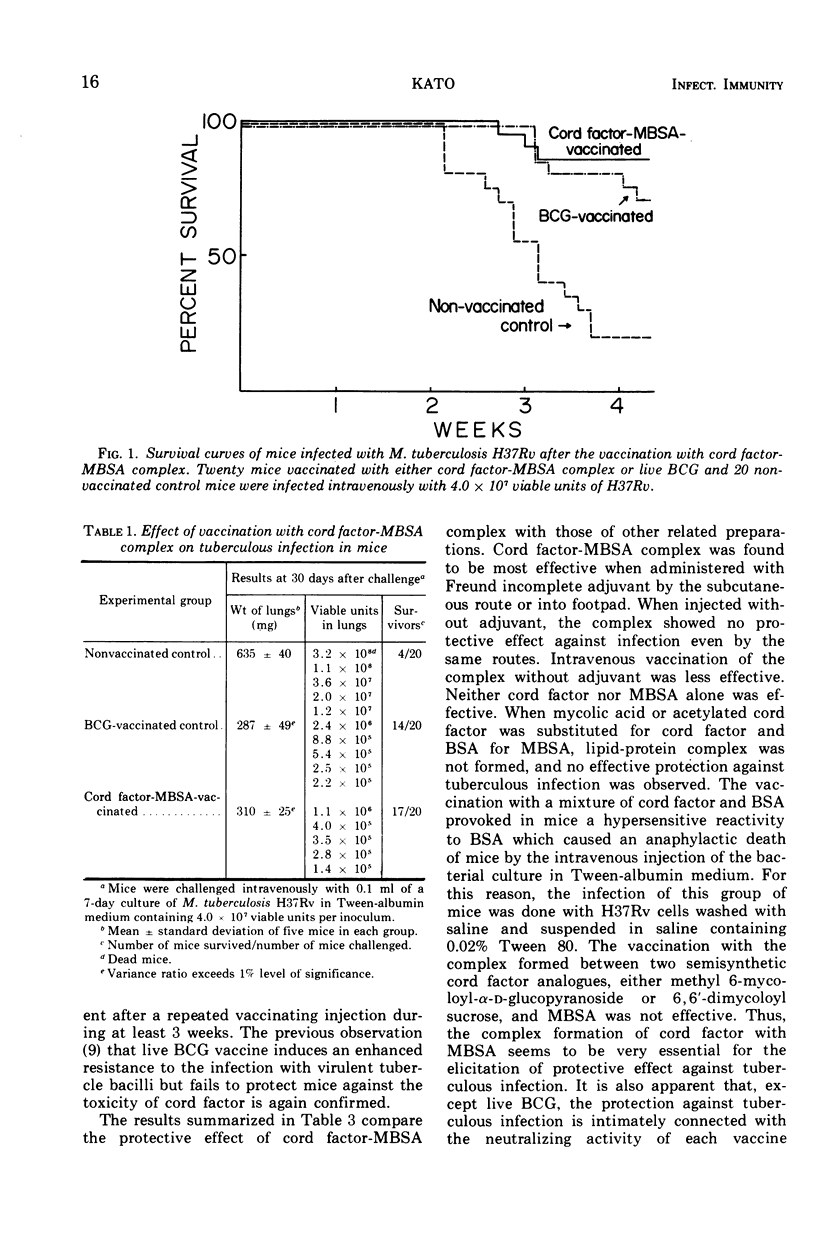
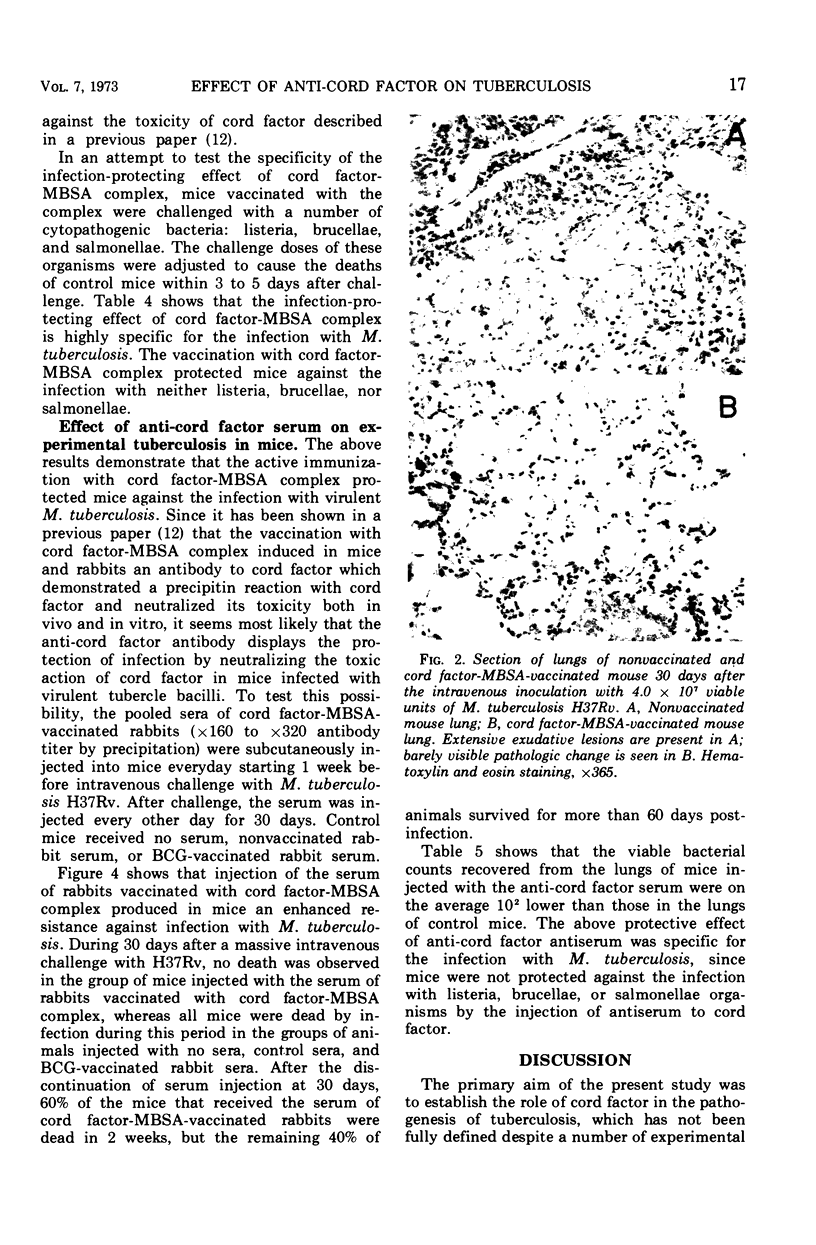
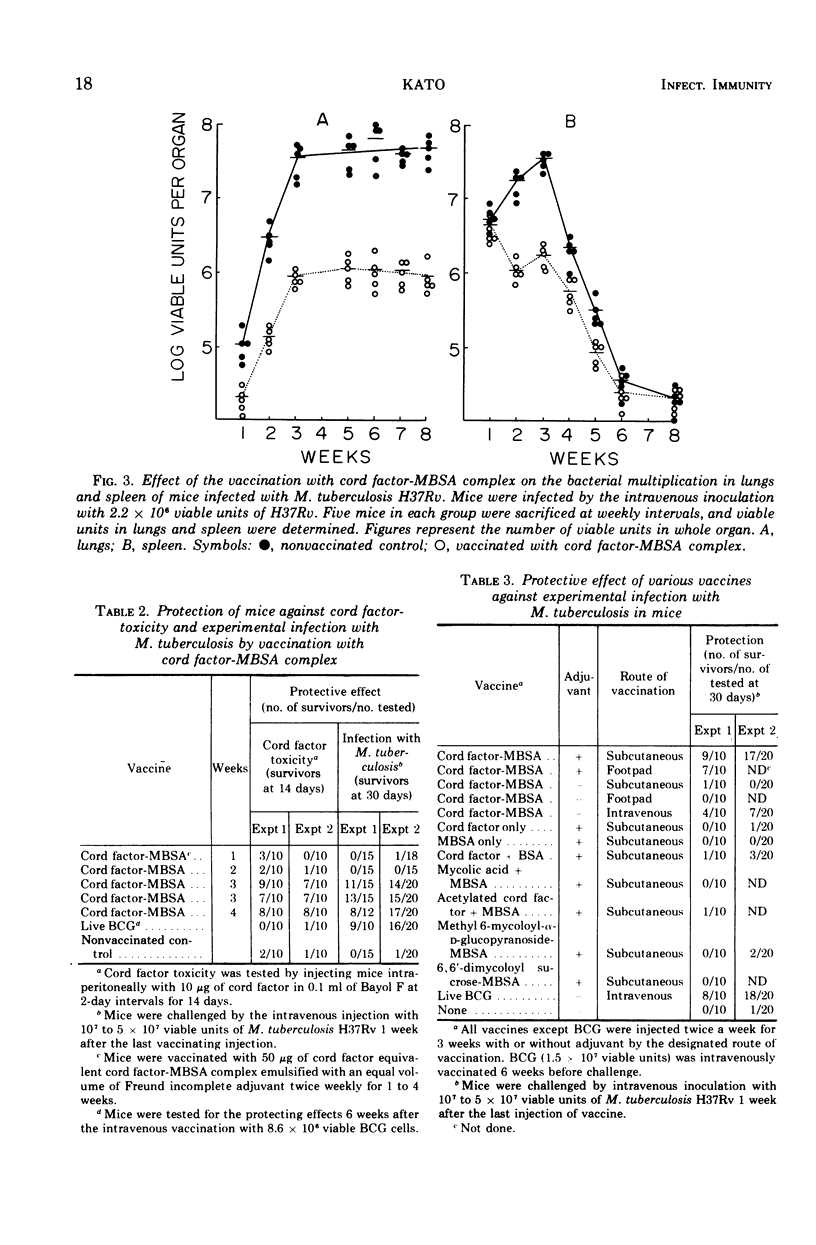
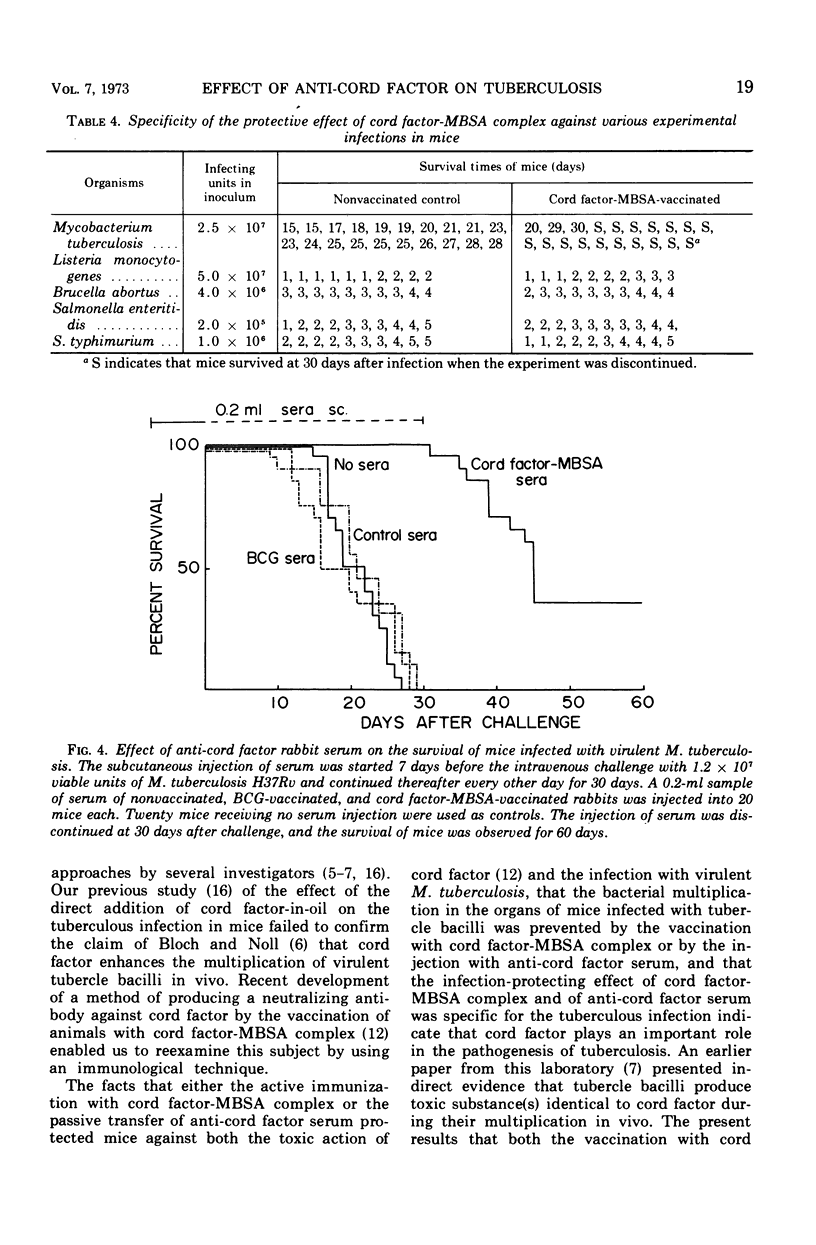
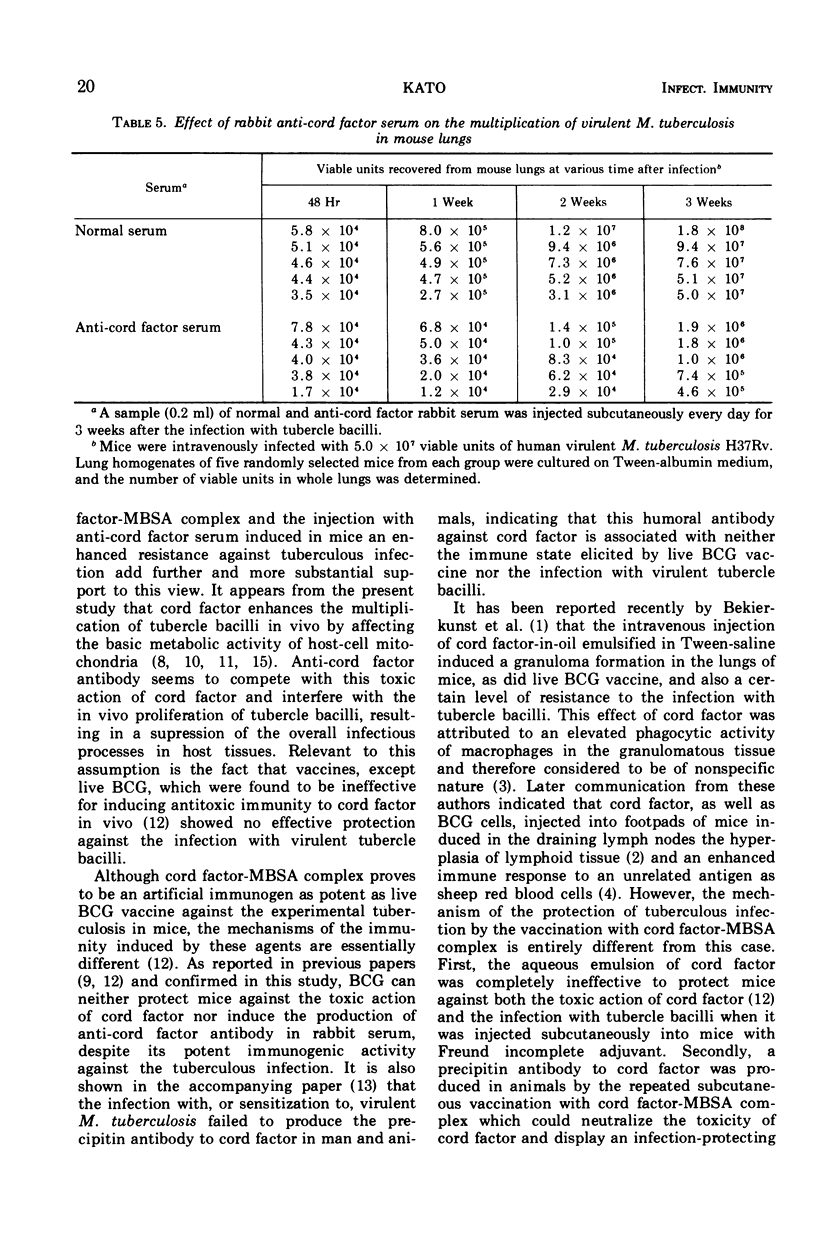
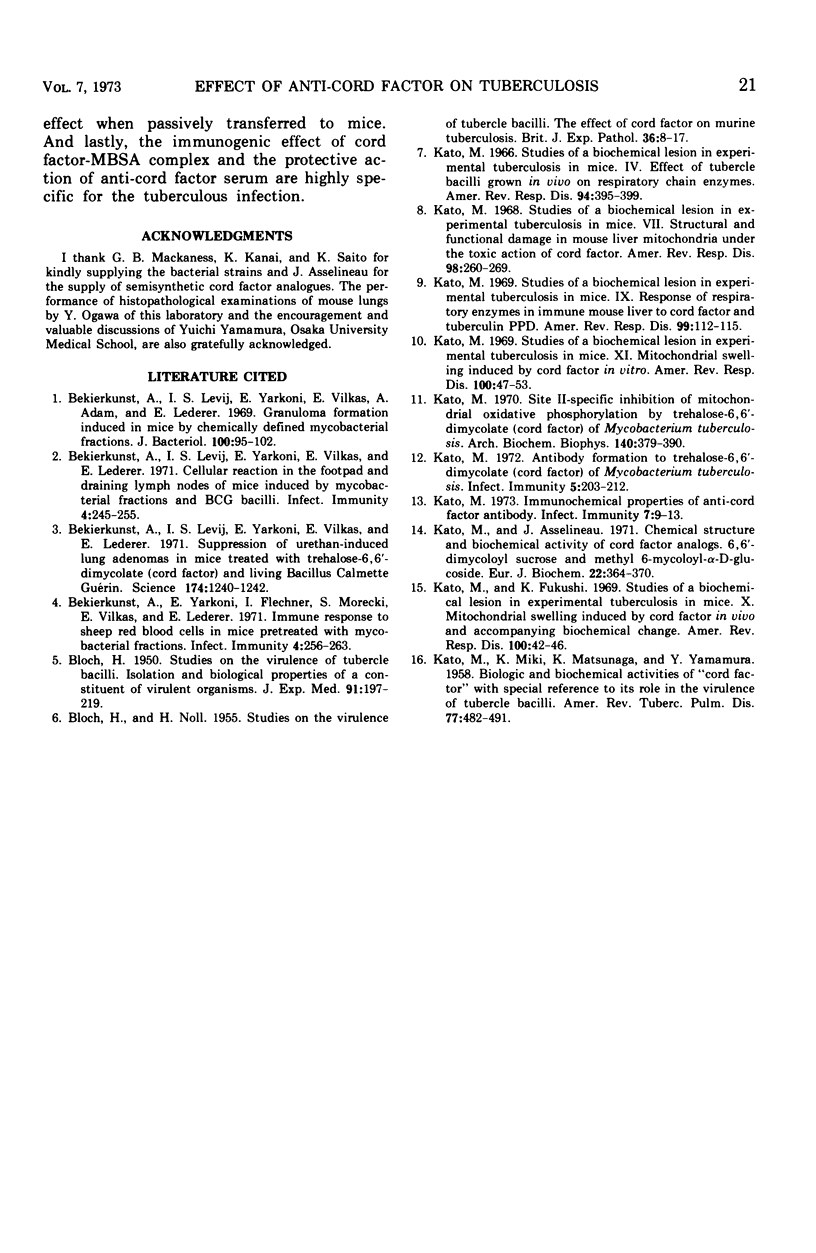
Images in this article
Selected References
These references are in PubMed. This may not be the complete list of references from this article.
- BLOCH H., NOLL H. Studies on the virulence of Tubercle bacilli; the effect of cord factor on murine tuberculosis. Br J Exp Pathol. 1955 Feb;36(1):8–17. [PMC free article] [PubMed] [Google Scholar]
- BLOCH H. Studies on the virulence of tubercle bacilli; isolation and biological properties of a constituent of virulent organisms. J Exp Med. 1950 Feb;91(2):197-218, pl. doi: 10.1084/jem.91.2.197. [DOI] [PMC free article] [PubMed] [Google Scholar]
- Bekierkunst A., Levij I. S., Yarkoni E. Suppression of urethan-induced lung adenomas in mice treated with trehalose-6,6-dimycolate (cord factor) and living bacillus Calmette Guérin. Science. 1971 Dec 17;174(4015):1240–1242. doi: 10.1126/science.174.4015.1240. [DOI] [PubMed] [Google Scholar]
- Bekierkunst A., Levij I. S., Yarkoni E., Vilkas E., Adam A., Lederer E. Granuloma formation induced in mice by chemically defined mycobacterial fractions. J Bacteriol. 1969 Oct;100(1):95–102. doi: 10.1128/jb.100.1.95-102.1969. [DOI] [PMC free article] [PubMed] [Google Scholar]
- Bekierkunst A., Levij I. S., Yarkoni E., Vilkas E., Lederer E. Cellular reaction in the footpad and draining lymph nodes of mice induced by mycobacterial fractions and BCG bacilli. Infect Immun. 1971 Sep;4(3):245–255. doi: 10.1128/iai.4.3.245-255.1971. [DOI] [PMC free article] [PubMed] [Google Scholar]
- Bekierkunst A., Yarkoni E., Flechner I., Morecki S., Vilkas E., Lederer E. Immune response to sheep red blood cells in mice pretreated with mycobacterial fractions. Infect Immun. 1971 Sep;4(3):256–263. doi: 10.1128/iai.4.3.256-263.1971. [DOI] [PMC free article] [PubMed] [Google Scholar]
- KATO M., MIKI K., MATSUNAGA K., YAMAMURA Y. Biologic and biochemical activities of cord factor; with special reference to its role in the virulence of tubercle bacilli. Am Rev Tuberc. 1958 Mar;77(3):482–491. doi: 10.1164/artpd.1958.77.3.482. [DOI] [PubMed] [Google Scholar]
- Kato M. Antibody formation to trehalose-6,6'-dimycolate (cord factor) of Mycobacterium tuberculosis. Infect Immun. 1972 Feb;5(2):203–212. doi: 10.1128/iai.5.2.203-212.1972. [DOI] [PMC free article] [PubMed] [Google Scholar]
- Kato M., Asselineau J. Chemical structure and biochemical activity of cord factor analogs. 6,6'-Dimycoloyl sucrose and methyl 6-mycoloyl- -D-glucoside. Eur J Biochem. 1971 Oct 14;22(3):364–370. doi: 10.1111/j.1432-1033.1971.tb01553.x. [DOI] [PubMed] [Google Scholar]
- Kato M., Fukushi K. Studies of a biochemical lesion in experimental tuberculosis in mice. X. Mitochondrial swelling induced by cord factor in vivo and accompanying biochemical change. Am Rev Respir Dis. 1969 Jul;100(1):42–46. doi: 10.1164/arrd.1969.100.1.42. [DOI] [PubMed] [Google Scholar]
- Kato M. Immunochemical properties of anti-cord factor antibody. Infect Immun. 1973 Jan;7(1):9–13. doi: 10.1128/iai.7.1.9-13.1973. [DOI] [PMC free article] [PubMed] [Google Scholar]
- Kato M. Site II-specific inhibition of mitochondria oxidative phosphorylation by trehalose-6,6'-dimycolate (cord factor) of Mycobacterium tuberculosis. Arch Biochem Biophys. 1970 Oct;140(2):379–390. doi: 10.1016/0003-9861(70)90079-2. [DOI] [PubMed] [Google Scholar]
- Kato M. Studies of a biochemical lesion in experimental tuberculosis in mice. IV. Effect of tubercle bacilli grown in vivo on respiratory chain enzymes. Am Rev Respir Dis. 1966 Sep;94(3):395–399. doi: 10.1164/arrd.1966.94.3.395. [DOI] [PubMed] [Google Scholar]
- Kato M. Studies of a biochemical lesion in experimental tuberculosis in mice. IX. Response of respiratory enzymes in immune mouse liver to cord factor and tuberculin PPD. Am Rev Respir Dis. 1969 Jan;99(1):112–115. doi: 10.1164/arrd.1969.99.1.112. [DOI] [PubMed] [Google Scholar]
- Kato M. Studies of a biochemical lesion in experimental tuberculosis in mice. VII. Structural and functional damage in mouse liver mitochondria under the toxic action of cord factor. Am Rev Respir Dis. 1968 Aug;98(2):260–269. doi: 10.1164/arrd.1968.98.2.260. [DOI] [PubMed] [Google Scholar]
- Kato M. Studies of a biochemical lesion in experimental tuberculosis in mice. XI. Mitochondrial swelling induced by cord factor in vitro. Am Rev Respir Dis. 1969 Jul;100(1):47–53. doi: 10.1164/arrd.1969.100.1.47. [DOI] [PubMed] [Google Scholar]



